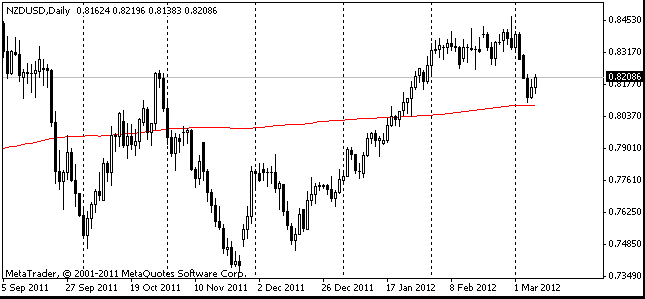EUR/usd
The domination of high technology in trading and many risks arising in this connection again came to the surface yesterday, when the false report in Twitter in two minutes washed over 130bln out of the market. Two messages from the hacked account of the Associated Press about an explosion in Washington caused heavy selling in the stock market, which deprived it by about a percent. Yet, soon the situation stabilized. Being important for stock exchanges, this news didn't produce an equally strong effect on the Forex market. Yesterday the pair was mainly affected by the news on the business activity in the EU largest economies. The data for France exceeded expectations, which sent eurusd up to 1.3080. However, in half an hour Germany's statistics gave rise to the move in the opposite direction, which eventually took the pair by a figure down. The preliminary statistics for April promise contraction of business activity both in manufacture and services sector. The contraction of the latter was a particular surprise. The bears in a sudden attack broke below 1.30. Later there were attempts to restore the status quo, but the thing was already done. In our opinion, the pair has entered a downtrend, though probably a short-term one. Its closest target may be at 1.2750 and then quite a lot will depend on the reaction of the ECB and the Fed's members. To be more exact, if the talks about a possible rate cut by the ECB will become a reality and how the power will be distributed between hawks and doves in the fomc. Yesterday's news from the USA pointed at a quite contradictory picture. The slight increase of home sales in March (to the annual rate of 417K) and quite a handsome price growth marked both in this research and in the special report from FHFA (+3% and 7.1% respectively) contrasts with the slowdown of manufacturing activity according to the Manufacturing PMI from Markit and the federal reserve Bank of Richmond.

GBP/USD
The British government significantly increased spending in March, as if it had felt beforehand the IMF's reproach for being very thrifty. The public sector net borrowing made £16.7bln against 14.6bln in the same month a year before. It's noteworthy that the trend of borrowing including interventions into the financial sector has reversed. From early 2010 till the first half-year of 2012 the total debt burden was decreasing, then till the end of the year the indicator was hovering a bit below 139% of the GDP, but in December and March there was again a sharp move up. Britain is in dire need for economic growth, which will help to decrease the debt load of the government, which earlier vouched for the financial sector.

USD/CAD
The Canadian retail sales surpassed the expectations yesterday, yet the nominal sales volume is still lower than in November 2012. Then this indicator was as high as 39.77bln against the current 39.55bln. In comparison with February 2012 sales have grown by 1.5% y/y in nominal terms and 1.4% in real terms. In the meantime, usdcad has stabilized and has stayed in the narrow range at 1.0250 since the end of the previous week.

NZD/USD
New Zealand has kept the main interest rate unchanged at 2.5%. There aren't any surprises, yet the Kiwi is growing on the comments of the RBNZ's head Graeme Wheeler that the GDP growth in the country's main trading partners remains strong. Thanks largely to China New Zealand managed to demonstrate a 1.5% growth of its GDP in 4Q last year and also show the highest annual growth since 2007. Yet, it's too early to speak about the rate increase as inflation remains at 0.9% y/y.
